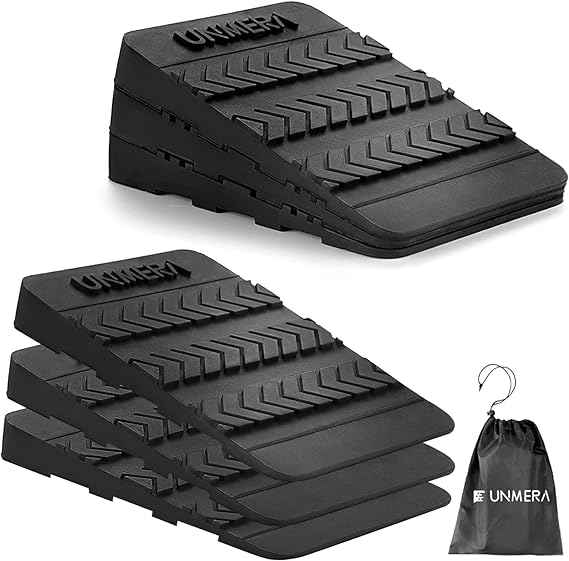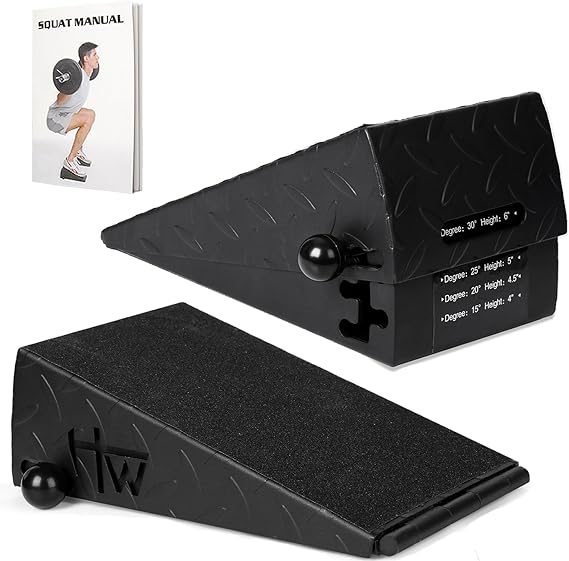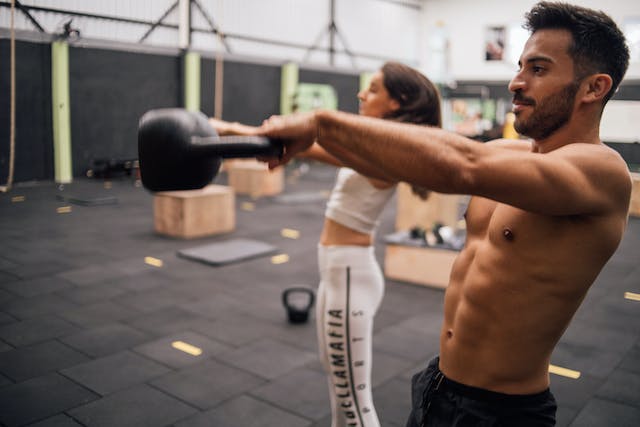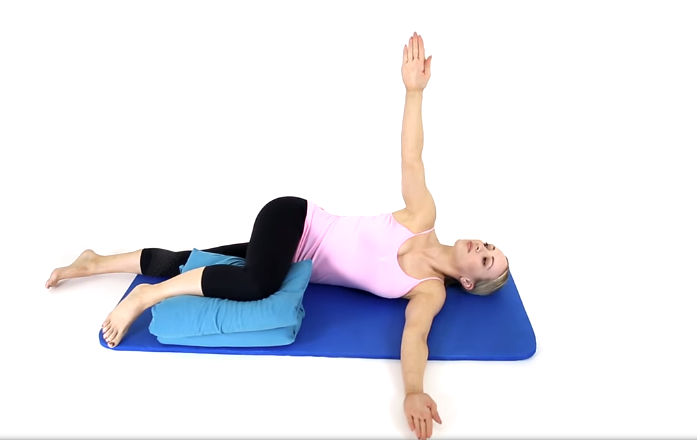Squatting exercises cannot be dispensed with when it comes to targeting the muscles of the lower part of the body, and some of the squatting variables are among the most powerful exercises that target the muscles of the lower body and stimulate them to grow and gain muscle mass. Today we are going to talk about elevated sumo squat, one of the variants of squatting exercises that will help you greatly.
You only need a kettlebell and a wooden plank or weight plate to raise your heels, this means that you can get an irresistible workout for the muscles of the lower body and can build your muscles and strengthen them well.
Why should you rely on elevated sumo squats and how to do it and the benefits you will get as well as the mistakes you should avoid making to get satisfactory results, all of this we will discover together in this post.
Disclosure: As an Amazon Associate, I earn from qualifying purchases. This means if you make a purchase through certain links on this site, I may earn a small commission at no extra cost to you. Your support helps in maintaining and enhancing the quality of content. Thank you for your support!
For Heel Elevated Squat At Home!



What is elevated sumo squat ?
Elevated Sumo squat is one of the variants of sumo squat so that bodybuilders place a wooden board or weight plate with a height of 5 to 10 centimeters under heels in order to raise the heels and do an elevated sumo squat. Athletes rely on this type of compound exercises to stimulate the muscles and activate them more.
The main purpose of this exercise is to allow for a good ankle mobility, more range of knee extension and more depth for hips while going down, and this leads to a greater stretch of the quadriceps muscles.
This exercise poses a greater challenge to the thigh muscles and helps to keep them tense throughout the exercise, and it also helps to operate some of the muscles that are in a state of inactivity with the regular sumo squat, such as the calf muscles, so with high heels this will put the calves under tension as well and will be targeted.
Elevated sumo squat muscle worked
The sumo squat is an exercise that engages 100% of the muscles of the lower body, targeting the quadriceps muscles mainly while targeting the rest of the muscles in varying proportions. The high sumo squat also incorporates the calves to become one of the muscles that are tense throughout the exercise.
Acording to the healthline, the elevated sumo squat engages the following muscles:
Quadriceps :
The thigh consists of four basic muscles associated with the knee. These muscles stretch every time we bend the knee, and the degree of pressure is related to the depth to which we go with the squat.
The quadriceps muscles are mainly targeted with this exercise so that you get the largest range of stretching well.
Hamstrings :
The hamstrings are also one of the targeted muscles because they are mainly associated with the knee, and they are targeted every time you bend your knees or when you squat slowly, squatting will help you to strengthen these muscles because they are the most susceptible to injury, so this exercise is useful.
Glutes :
The buttocks muscles consist of a group of muscles that help stabilize the upper body, the most important of these muscles is the glutes. These muscles are targeted when the hip muscles are extended back and lower well when squatting.
The deeper you go, the greater the degree of targeting the glutes, as it is linked to the flexion of the hips, so the elevated sumo squat allows you to go to a greater depth and thus can squeeze the glutes muscles well.
Adductors :
The adductor muscles are located on the inner sides of the thighs. They are targeted when we squat with our feet apart and the toes pointing outward.
These muscles get stretched because sumo squats require you to do them with your feet apart and therefore you feel tension on the sides of your inner thighs, so that you squat and your knees go outward. This makes these muscles tense with each repetition.
Calves :
The calves are also one of the muscles that fall under the pressure of this exercise, so that targeting the calves requires raising the heels, and thus this leads to contraction and extension of the calves, so these muscles remain tense throughout the exercise.
Hip flexors :
The hip flexor muscles is the main muscle that helps you to do squats, and if you suffer from problems at the level of the flexor muscles, you will not be able to do squats, so it is responsible for bending the hips in all directions and keeping the body balanced.
What is the difference between normal sumo squat and elevated sumo squat?
Squatting with elevated heels helps you target small muscles located in the hips, as well as allows more activity at the ankle level, and we are talking here about greater activation of the calves and leg muscles, while regular squats do not allow more range to target these muscles.
Sumo squats with elevated heels also allow for greater range of motion and greater strength around the knee, and this helps provide more space for the extension of the quadriceps muscles.
We can say that elevated sumo squats are more beneficial for the muscles of the lower body compared to regular sumo squats, as they allow you to stretch the glutes and provide more space during squatting.
How to master elevated sumo squat?
Elevated sumo squats are not a complicated exercise, especially while doing them with body weight or with kettlebells, as they are safer compared to barbells, so you can master them during your first attempts.
You will first need to do sumo squats properly without weights or anything that hinders the path of your movements or leads to an imbalance.
First, you must maintain your movement properly, your back straight, your movement speed, your muscles working well, and feeling them tense, you will gain some flexibility and experience with each proper repetition, then you can add some weights gradually, and it is better to go with the kettlebell because it is easy, safe and It would be good for a start.
How to perform an Heel elevated sumo squat corectly
- First you will need a weight plate or any solid object between 5 and 10 centimeters high in order to raise the heels.
- Spread the plates a little more than shoulder width apart.
- Place your heels on the boards and keep your toes pointing slightly to the sides (outward).
- Keeping your back straight, hold a kettlebell with a light weight in front of your torso and keep some bend in your elbows.
- Start by squatting and letting your hips slowly drop down.
- Let the kettlebell also fall between your thighs; And try to bend your back forward a little as if you were trying to pick up something.
- Squeeze your thigh muscles and stand up again until you are in the previous position.
Elevated sumo squat (elevated feet version)
- This is also a variant of the sumo squat, in which the athletes put their feet on steps or two boxes and squat off the ground to gain more space.
- Bring two boxes or steps or anything solid and high off the ground.
- Climb onto the steps, boxes, keeping them a little more than shoulder-width apart.
- Hold a dumbbell or kettlebell between your arms, and keep your arms straight in front of your pelvis.
- Keep your back straight, your toes slightly outward.
- Start squatting, take advantage of the space you have, and stretch your muscles well.
- Squeeze the thigh muscles and raise your body back to the previous position.
Elevated sumo squat mistakes
There are some mistakes that you should avoid when you want to do elevated sumo squat exercises. Making mistakes delays the appearance of results and does not help to motivate you to continue because you may throw in the towel before you get results or because of injury.
Don’t arch your back.
- Keep your back straight and neutral at all times, this is something you must get used to with all exercises because the arch of the back can lead to pain after exercises.
You’re squating but you don’t take advantage of the range you have.
- There are those who do a half-squat and return to the standing position again, and thus do not get a full stretch of the thigh muscles, so try to reach two knees in the form of a right angle as a minimum, and if you want to target the glutes, you must go deeper than that.
You do a loaded squat, but do not lift the weight with your leg muscles.
- You must keep your hands neutral even though you are holding a dumbbell or a kettlebell. The role of the hands here is to tighten the grip on the weight and not to help lift it. You should leave this matter to the thigh muscles. Always lift the weight by squeezing the muscles of the legs.
You’re keeping your toes pointing straight ahead.
- Also, this is a mistake many people make, and this is the reason why some people suffer a knee injury. Should you keep your fingers waved out a little in order to get more space and do squats safely and comfortably.
Elevated sumo squat benefits
- Sumo squats help you get more range to stretch your glutes.
- It solves the problems of small thigh muscles, as it works to increase its size and gain muscle mass.
- Improve the movement of the knee joint and reduce injuries.
- Improve your performance with some other compound exercises such as deadlifts.
- Gain ankle flexibility and target the calves as well.
FAQ
Is Elevated Sumo Squat Good ?
Elevated sumo squats enhance glute and inner thigh engagement, promoting muscle activation and overall strength gains. The elevated position deepens the squat, intensifying the workout for greater lower body sculpting.
What Is The Different Between Elevated Sumo Squat And Normal Squat?
An elevated sumo squat involves placing your feet on an elevated surface, emphasizing glutes and inner thighs more than a traditional squat. The elevation increases the range of motion, intensifying the workout and targeting different muscle groups compared to a standard squat.
Do Sumo Squats Grow Glutes?
Yes, sumo squats can contribute to glute growth. Sumo squats target the glutes, inner thighs, and hamstrings, making them an effective exercise for building strength and muscle in the gluteal region. Consistent inclusion of sumo squats in a well-rounded workout routine can contribute to glute development.
Useful Links
If you would like to do more exercises that target the muscles of the lower body, these links will help you a lot to learn about the most powerful compound exercises and isolation exercises that target all the muscles of the lower body.
Romanian deadlift alternatives for massive leg muscles
10 barbell squat variations at home
Best lower body training using only the resistance bands



